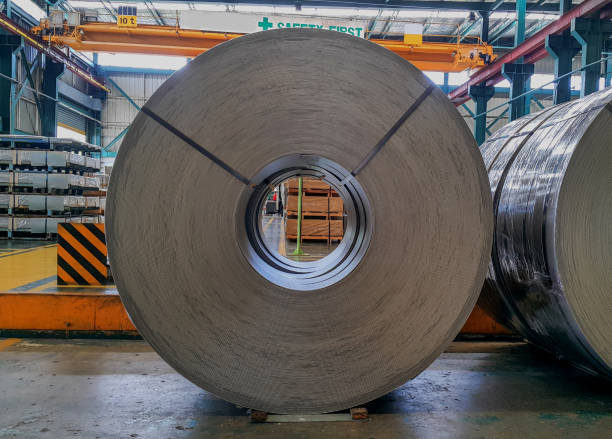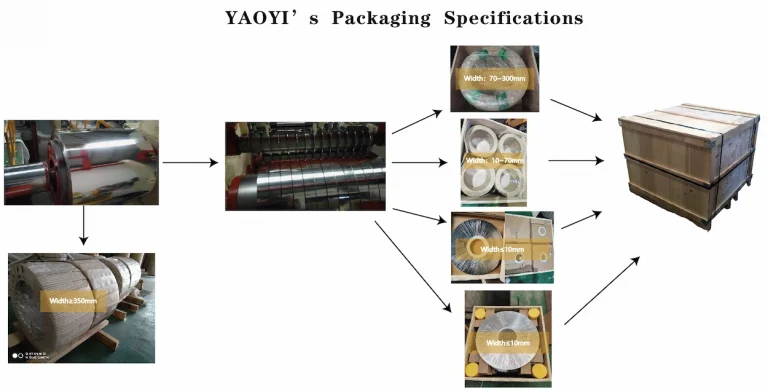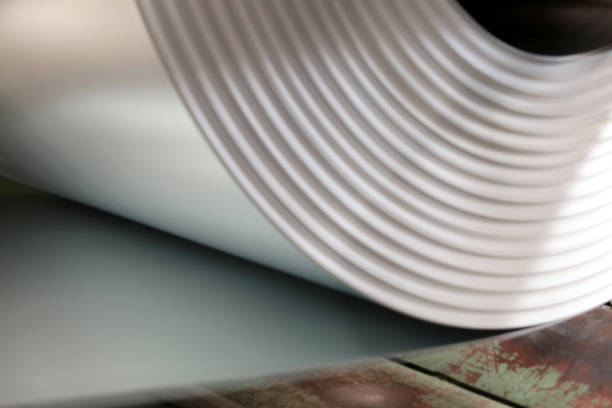AISI stainless steel has been around for decades and as it continues to evolve, steel is still considered one of the most high-demand products in commercial industries and construction businesses. Such like aisi 304, aisi 201, aisi 316, aisi 301, aisi 4140
It is also known for its excellent attributes with various steel grades to choose from. Myriad provides high-quality AISI stainless steel along with the best services for your convenience
But which AISI stainless steel is right for you?
In this article, you will learn the characteristics of one of the most widely used steel, AISI 4140. To better understand why this steel might be the right choice for you, we made this thorough article full of detailed information and answers to common questions about the AISI 4140 stainless steel.


First, you should know what the meaning of AISI is.
AISI or the American Iron and Steel Institute, was founded back in 1908. They were one of the first companies to contribute to the numbering system for steel we have today with the combined effort of the Society of Automotive Engineering.
AISI 4140 is a ferritic stainless steel that contains 17% Chromium, which is an element that is common among stainless steel. AISI 4140 does not have the best corrosion resistance and hardenability.
This is one of the reasons why stainless steel 4140 is not good to get in contact with high-pressure gas or liquid because of its components or porosity.
Nevertheless, it has its great functions and purposes as well that is great and compatible for aircraft parts, gears, pinions, and shafts.
But before going through its uses, you should first understand what Ferritic stainless steel is.

You might be wondering what ferritic stainless steel is, and is it similar to austenitic and martensitic steel?
Somewhat, but it has its own properties that other types of steel does not have.
For starters, ferritic stainless steel is a steel alloy that contains Chromium. It differs from other types of steel when it comes to molecular grain structure and chemical composition. There are subtle differences in their mechanical properties as well.
Ferritic stainless steel is also defined as a “straight chromium”. Meaning, it is part of the non-hardenable class of stainless steel alloys that have chromium contents of 10% to 30% with a low Carbon content of less than 0.20%.
As mentioned, this type of steel is non-hardenable by heat treatment and they are partially hardenable by cold rolling.
Below are also Ferritic AISI stainless steel examples:
For more details and inquiries about the different types of steel above, you may contact YAOYI’s team of professionals for fast accommodation.
Stainless Steel 316 And 316L Graded By The AISI System
One of the key features of stainless steel 4140 is that consumers love its high ductility. In its annealed state, the AISI 4140 can be formed using conventional techniques. It is also considered a tough low alloy steel which requires more pressure when it comes to forming.
In fact, it is even tougher than plain carbon steels. So if toughness is one of your purchase decision factors, that is one green flag for you.
AISI 304 2B: One Of The Most Commonly Used Stainless Steel
AISI 4140 is a chromium-molybdenum alloy steel, which gives moderate protection against corrosion, and extra hardness penetration. In terms of the molybdenum, it provides uniform hardness and strength.
Moreover, this type of steel can be oil-hardened to a high level of hardness.
BEST 304 Stainless Steel Products in China
Stainless steel 4140 is a versatile steel grade that is capable of being used for different applications. Most common use are tools, because of its high content of carbon and chromium.
Stainless Steel 316 And 316L Graded By The AISI System
You can tell if you already have an stainless steel 4140 laying around your household through an acid test. This involves a 1/1 solution of hydrochloric acid that is saturated with Sulfur Dioxide gas.
If there is a purple spot after you drop it into the steel, then it is most likely a Ferritic stainless steel. This test is actually meant to detect molybdenum products but it can also be used to test and see if a steel is ferritic.
ASTM A167: Composition, Properties, and Equivalent Grades
AISI 4140 is a superb affordable stainless steel available in YAOYI. It is a premium low alloy steel that does the job very well for applications that require moderate amounts of temperature endurance and ductility.
In the chemical composition of stainless steel 4140, you will find here the elements that are responsible for its layers of protection with 0.80% – 01.10% of Chromium and 0.15% – 0.25% as its main elements.
For comparison of other steel grade’s chemical composition, you can check it in YAOYI’s Chemical Composition Chart for different types of grades.
The definition of steel grade is to classify different types of steel by looking into its mechanical properties and chemical composition. Each type of steel grade is different from one another as it has its own unique elements and purposes.
AISI 4140 has low carbon (0.380% – 0.480%) and chromium-molybdenum components.
Tensile strength is responsible for giving resistance to the steel while it is under tension. Tensile strength plays a vital role in the flexibility or formability of the steel. For AISI 4140 Stainless steel, it has a tensile strength of 95000 PSI (Per square inch)
If you are not sure what tensile strength you should use for your projects, you can contact us by clicking/tapping here. YAOYI will guide you to what tensile strength is appropriate for your projects since the wrong tensile strength risks your project from breaking.
Yield strength is the test or measurement of steel going through stress but in an amount that is lesser than it yields. This manner is also used as a measuring tool or factor to check a certain steel’s strength. Steels that break while being given tension at moderate amounts are considered low grades that are not suited for big projects.
In this case, the strength of AISI 4140 is 60,200 PSI which means that it is capable of going under a large amount of stress without showing any signs of breaking or damage.
Elongation is the rate of measurement of how much a steel can stretch from its original length, this is an important factor to consider if you are looking for steel that is flexible. Stainless steel 4140 has an elongation rate of 25.70% which is excellent for forming the steel into various shapes without breaking.
ASTM A167: Composition, Properties, and Equivalent Grades
If you are wondering what are the common uses of stainless steel 4140, here are the answers:
AISI 4140 is very strong as it remains cost-effective when it comes to machining. So, don’t be surprised to find AISI 4140 in gun barrels because they are designed to withstand that.
This grade can also be used for bolt receivers, and muzzle breaks.
As aforementioned, AISI 4140 is commonly used in tools because of its chemical composition that enables it to withstand beatings that other steel grades cannot handle. Specifically, the power in its high fatigue strength, abrasion-resistance, and impact-resistance.
Shafts require durability, ductility, and some moderate protection against corrosion and abrasion, which is the perfect job for the AISI 4140. This is what makes Shafts very durable and sturdy in their built-design.
Whether big or small, bolts use AISI 4140 because of its durability to resist abrasion when being twisted and not getting its internals affected by the tension another tool gives when it is being adjusted.
The same goes with machinery parts. Apart from the shine it gives, they are great at withstanding pressure and tension as well because of their high tensile strength and yield strength.
This is the reason why bolts and nuts are very compatible, especially if they are of the same material. It simply is easier to use, twist, adjust, insert, and remove because of its ductility and protective resistance against abrasion that makes it hard to twist.
Other examples but not limited to are located below:
And of course, many more.
Grade 304 Stainless Steel Foil
Below are questions commonly asked by consumers that are interested in using AISI 4140:
AISI 4140 is a low alloy type of steel that contains molybdenum, chromium, and manganese, which is quite similar to AISI 316. It is used for various purposes because of its versatility and toughness as you can see from above.
It is also worth mentioning that it has a high fatigue strength and both abrasion and impact resistance.
How To Find The Right Stainless Steel Supplier
The stainless steel 4140 contains excellent resistance against corrosion, which is the main reason why it does not rust so fast compared to other steels. It does rust but not in a manner that degrades the whole steel fast.
However, when it does get corroded, the steel will rust and degrade.
No, there are other types of steel grades that are best suited for this. Specifically, those steel grades that can handle extreme temperature conditions and shifting weather.
Is 301 Stainless Steel Magnetic?
It is not recommended to use stainless steel 4140 outdoors because it is prone to corrosion for environments that are constantly exposed to gas and liquid elements including chloride.
It can be but there are better options like the AISI 420. The AISI 4140 is just not built or designed to be used for cutlery items or products.
J2 Stainless Steel: A Complete & Thorough Guide
Below are the advantages and disadvantages of the stainless steel 4140. This section will help you make up your final thoughts as well on your purchase decision. Should you have any further concerns, YAOYI is willing to answer them.
Here are the key maind advantages of the AISI 4140:
It is also worth mentioning that the ferritic stainless steel has great resistance against oxidation. Specifically at high temperatures. This resistance is caused by its chemical composition that gives it its protection.
There can be other elements added as well to give it more protection such as silicon and aluminum.
AISI 4140 can withstand high thermal conductivity. In other words, heat can move through it seamlessly. This is why AISI 4140 can be used in furnaces and heat exchangers and other applications that involve heat.
Carbon may contribute to the hardness of a steel but it can also make it less ductile. But since AISI 4140 has low carbon levels, they possess high ductility. This means that it has great formability as well.
Ferritic steels like the AISI 4140 is known for its low carbon content with high ductility but less acknowledges its formability properties. This makes them very versatile to be formed into many shapes without having it to show any signs of cracks or damage.
But this also has its cons as well, because of this, they cannot be hardened through heat treatment. Moreover, there is a high possibility that there will be problems in the process of welding such as cracks.
Below are the disadvantages the AISI 4140 has:
Not all steels are easy to forge. There are steels that are hard to forge as well including the AISI 4140. This steel grade tends to be more difficult to forge because of its hardness and welding foge spectrum.
Since stainless steel 4140 is a basic ferritic steel that is not heatable, it cannot be used for high pressure gas and as well as liquids because of the chances that it will corrode.
Usually AISI 4140’s are not used in appliances that are consistently exposed to liquid because the AISI 4140 is not designed to endure such elements.
J3 Stainless Steel : A Complete Guide For Importers
The best stainless steel 4140 along with the best services and friendly quotes can be found at China’s #1 steel manufacturing company, YAOYI. For your stainless steel needs and concerns, YAOYI offers fast responses to their queries in order to get you accommodated as soon as possible.
What is J4 Stainless Steel? (And What Is It Used For)
In conclusion, AISI 4140’s are great for smaller projects and manufacturing businesses that produce machinery parts or items. The AISI 4140 has superb ductility and moderate resistance against corrosion, oxidation, abrasion, and impact, which are great for your small projects’ needs!
If you feel that you need more clarifications and a recommendation, you know who to contact.